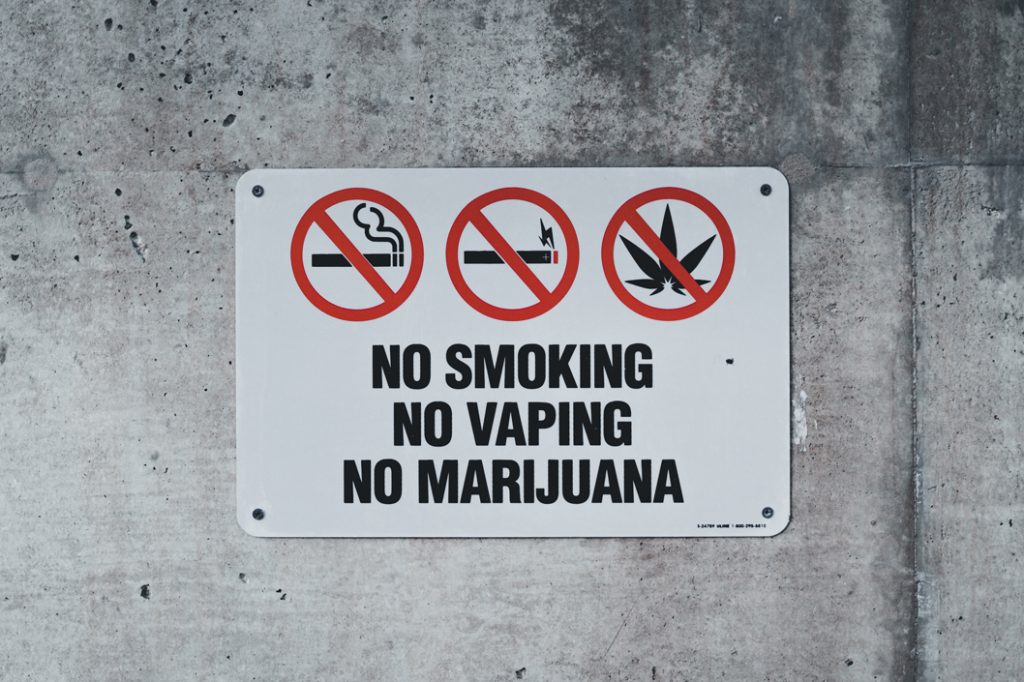In the ongoing quest for healthier living and cleaner environments, the fight against smoking takes center stage. From the silent authority of No Smoking signs to the aid of nicotine patches and gums and innovative devices like the Smoke Buddy, individuals and communities are exploring diverse strategies to curb smoking habits and minimize the far-reaching impact of cigarette smoke. This journey toward cleaner air prioritizes personal well-being and aims to create smoke-free spaces for the benefit of all.
1. The Impact of ‘No Smoking’ Signs: Advocating for Smoke-Free Spaces
The simplicity of a ‘No Smoking’ sign carries a potent message. Placing these signs strategically, both indoors and outdoors, serves as a visual reminder of the commitment to a smoke-free environment. From public areas to workplaces, the presence of these signs not only communicates the rules but also fosters a collective responsibility for maintaining clean air spaces.
2. Nicotine Patches and Gum: Aiding Tobacco Cessation Efforts
Nicotine addiction poses a formidable challenge, prompting many individuals to turn to nicotine patches and gum for support in their journey to quit smoking. These products offer a controlled release of nicotine, assisting in managing withdrawal symptoms and cravings. By providing these alternatives, individuals can gradually reduce their reliance on cigarettes, facilitating a healthier transition away from smoking.
3. The Smoke Buddy: Minimizing Smoke with Innovative Solutions
Innovations like the Smoke Buddy, a discreet and effective personal air filter, offer a practical solution for minimizing secondhand smoke. This compact device allows users to exhale into it, trapping and eliminating a significant portion of smoke particles. Whether at home or in public, the Smoke Buddy provides a discreet way to enjoy smoking rituals while significantly reducing its impact on surrounding air quality.
4. Air Purifiers: Enhancing Indoor Air Quality
Air purifiers equipped with advanced filtration systems have become indispensable tools for achieving cleaner indoor air. These devices effectively capture and remove smoke particles, reducing the presence of harmful substances in the air. Placing air purifiers strategically in areas prone to smoking enhances overall indoor air quality and creates a more breathable environment.
5. Community Education Programs: Empowering Through Knowledge
Education plays a pivotal role in promoting smoking cessation and reducing exposure to cigarette smoke. Community-based programs, workshops, and informative campaigns contribute to raising awareness about the health risks associated with smoking and the importance of creating smoke-free zones. Empowering individuals with knowledge becomes a catalyst for change, fostering a collective commitment to healthier lifestyles.
6. Smoke-Free Policies: Shaping Institutional Practices
Institutions, be they educational, corporate, or recreational, play a crucial role in shaping societal norms. Implementing and enforcing smoke-free policies within these entities protect individuals from involuntary exposure to cigarette smoke, reinforcing a culture that prioritizes health and well-being. These policies set the tone for responsible practices that extend beyond personal choices.
7. Behavioral Support Programs: Addressing the Psychological Aspect
Smoking often intertwines with behavioral patterns and psychological triggers. Behavioral support programs, including counseling and support groups, address the psychological aspect of nicotine addiction. By providing individuals with coping mechanisms and strategies to navigate stressors without resorting to smoking, these programs contribute to sustainable, long-term smoking cessation.
8. Public Advocacy and Legislation: Driving Systemic Change
Advocacy at the legislative level is a formidable force in the movement against smoking. Public policies and regulations, such as increased taxes on tobacco products and restrictions on smoking in public spaces, contribute to reducing smoking rates and shielding non-smokers from the harmful effects of secondhand smoke. A comprehensive approach to public health necessitates systemic changes that discourage smoking on a societal level.
Conclusion: Navigating the Path to Smoke-Free Living
As society collectively strives to reduce smoking and minimize the impact of cigarette smoking, a multifaceted approach emerges. Each strategy weaves into a broader tapestry of efforts from the symbolic power of ‘No Smoking’ signs to the practicality of nicotine replacement therapies, innovative devices like the Smoking Buddy, and community-driven initiatives. By combining personal choices with community support, education, and legislative action, the journey toward smoke-free living becomes an achievable reality, ensuring cleaner air for current and future generations.
Read our more blogs here, like The Impact of Good Health on Well-Being
You may also like
-
Effortless Pigmentation Mark Removal: Exploring the Benefits of Yellow Laser Treatment
-
Pelvic Mesh Implants: What You Should Know About Potential Side Effects
-
How to Recover From a Foot Injury
-
Finding Balance: 7 Stores Offering the Best Traditional Chinese Medicine for Stress Relief
-
Sildisoft 100 and Valentine’s: Crafting Moments of Love

